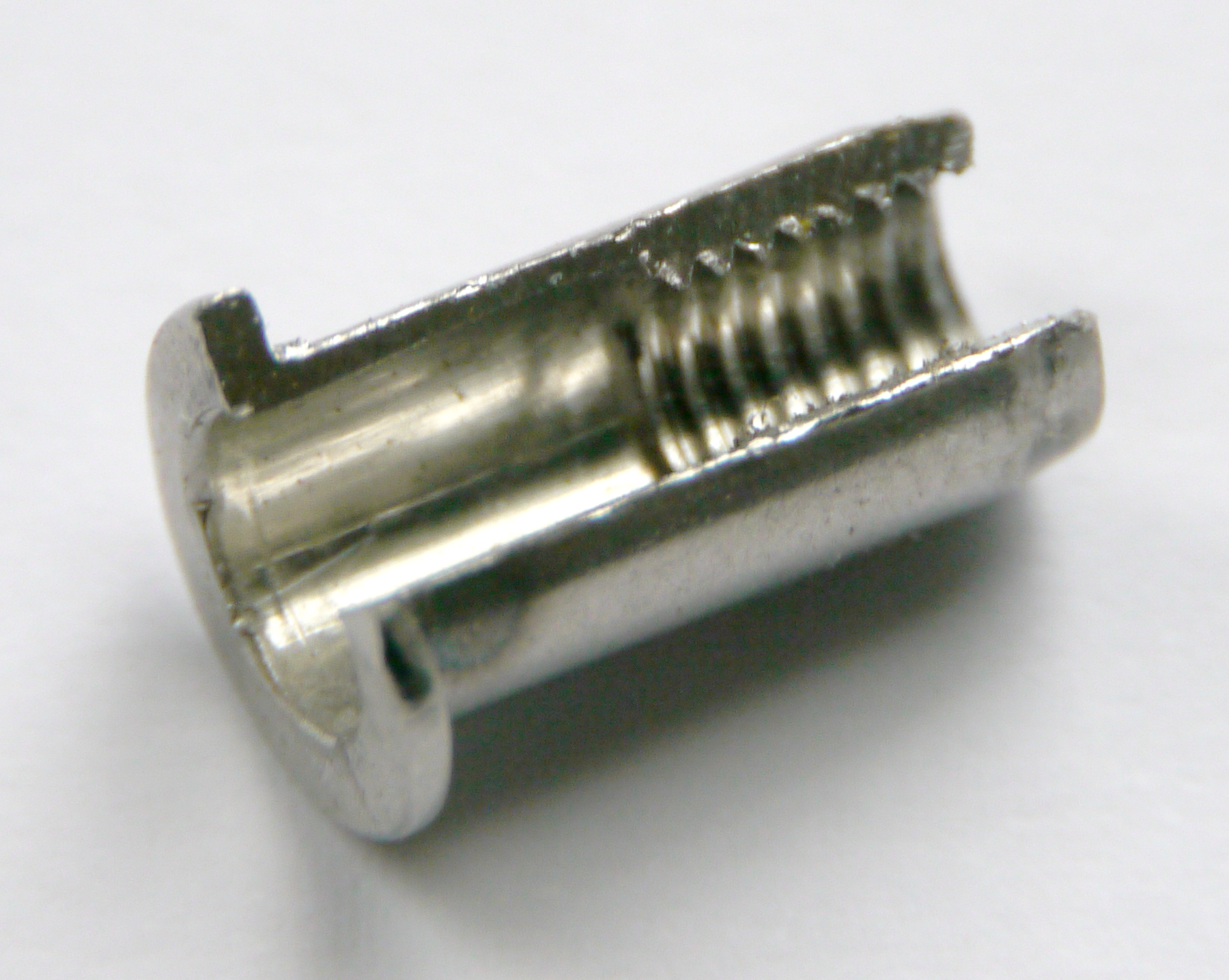rivnut on:
[Wikipedia]
[Google]
[Amazon]


 A rivet nut, also known as a blind rivet nut, or rivnut, is a one-piece internally threaded and
A rivet nut, also known as a blind rivet nut, or rivnut, is a one-piece internally threaded and


 A rivet nut, also known as a blind rivet nut, or rivnut, is a one-piece internally threaded and
A rivet nut, also known as a blind rivet nut, or rivnut, is a one-piece internally threaded and counterbore
A counterbore (symbol: ⌴) is a cylindrical flat-bottomed hole that enlarges another coaxial hole, or the tool used to create that feature. A counterbore hole is typically used when a fastener, such as a socket head cap screw or fillister head ...
d tubular rivet
A rivet is a permanent mechanical fastener. Before being installed, a rivet consists of a smooth cylindrical shaft with a head on one end. The end opposite to the head is called the ''tail''. On installation, the rivet is placed in a punched ...
that can be anchored entirely from one side. It is a kind of threaded insert
A threaded insert, also known as a threaded bushing, is a fastener element that is inserted into an object to add a threaded hole. They may be used to repair a stripped threaded hole, provide a durable threaded hole in a soft material, place a thr ...
. There are two types: one is designed to form a bulge on the back side of the panel as a screw is tightened in its threads. The other is similarly drawn in using a screw, but is drawn into the sleeve instead of creating a bulge.
History
The first rivet nut was created by BF Goodrich in the 1930s, and sold under the trademark RIVNUT®. It was first used to mount rubberde-icing boot
A deicing boot is a type of ice protection system installed on aircraft surfaces to permit a mechanical deicing in flight. Such boots are generally installed on the leading edges of wings and control surfaces (e.g. horizontal and vertical sta ...
s to aircraft wings.
Usage
In the field of aviation, rivet nuts are often used to attach various items, such asstatic discharger
Static dischargers, also called static wicks or static discharge wicks, are devices used to remove static electricity from aircraft in flight. They take the form of small sticks pointing backwards from the wings, and are fitted on almost all civi ...
s and inspection access covers, to the surface of an aircraft. Rivet nuts are an ideal replacement for weld nut
A weld nut is a special type of nut specifically designed to be welded to another object (spot welding). There are various types for different applications.
Types
;Round base nuts
These nuts have a long threaded cylinder with a large circular b ...
s because they will not distort base materials, eliminate weld splatter, toxic fumes, and other by-products of the welding process, and can be installed in many different kinds of material including steel, plastic, composites, and fiberglass.
See also
*Swage nut
A swage nut or self-clinching nut is a type of nut or threaded insert that is used on sheet metal.
It permanently anchors itself to the sheet metal by swaging the surrounding material. Generally, the swage nut is made of a hard metal such as ...
* Friction drilling
Friction drilling is a method of making holes in metal in which the material is pushed out of the way with the aid of heat from friction. The process is also called thermal drilling, flow drilling, form drilling, or friction stir drilling.
Fricti ...
References
Notes
Bibliography
* *. *. {{Nuts (hardware) Nuts (hardware)